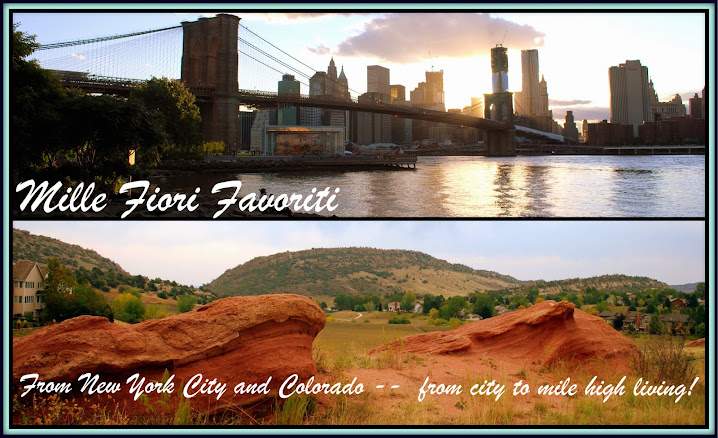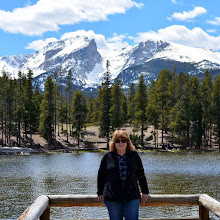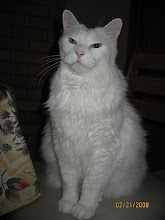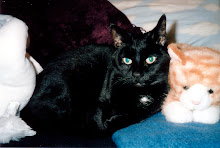This past spring my husband and I took a road trip to SE Colorado to visit The Great Sand Dunes National Park--click here to read that post--and we decided to visit two National Historical sites on our way back home. One was of these sites was the Sand Creek Massacre National Historic Site located in Kiowa County, near Eads, on the great high plains of Colorado. This site is sacred, controversial, symbolic and a reminder of a national tragedy that happened on November 29, 1864. I was profoundly touched by what I read and saw at this site, and although it is a difficult subject, I thought it would be fitting to show what we saw on the 152 year anniversary as well as to wonder what has the United States learned from its past?
Our drive was very long. The high plains of Colorado are very vast and very desolate in many areas. The remoteness of the Sand Creek location made me wonder even more why this event happened so long ago.
We passed through dry prairie grasslands, by ranches, and some farms before we passed by the desolate ghost town of Chivington. This was a landmark that the Sand Creek Massacre site was close by.
When we passed through the gate there was still some drive ahead, with only a few trees visible a small visitor center and some placards describing what happened here. My husband and I and one other man were the only visitors at the time, but a ranger came to meet us to tell us the history of the area and direct us towards the massacre site.
Please click on to enlarge
Along the Big Sandy Creek, about 700 Cheyenne and Arapaho native people were living peacefully at a winter camp in what was then Colorado territory. They believed they were under the protection of the US Army by treaty. Many of the men were away hunting for food, so the camp consisted of mainly old people, women, and children. At dawn on November 29, 1864, approximately 675 U.S. volunteer soldiers, commanded by Colonel John M. Chivington, attacked the sleeping natives with guns and cannons. Black Kettle, one of the peace Chiefs, raised an American flag and white truce flag above his tipi, as he had been promised protection, but he also had to flee. While many managed to escape, about 200 women and children, and the elderly struggled to run in the sandy earth of the dry creek bed. Some women tried to dig trenches in the creek bed, or in the hollow logs of cottonwood trees to hide their children, but most were mercilessly slaughtered during the eight hours of fighting. During the afternoon, and the next day, the soldiers wandered over the field committing atrocities on the dead, taking native belongings as souvenirs, and burning down the encampment, before departing the scene on December 1, to resume campaigning.
Please click on to enlarge
A placard on the site explains the events of the massacre.
For many years the Arapaho and Cheyenne people had lived their way of life on the plains of Colorado, but the discovery of gold in 1858 brought many prospectors and then many settlers into the Colorado territory, increasing conflicts and clashes with the natives. Territorial Governor John Evans wished to apply for statehood and felt the eradication of "hostile natives" would ensure the safety of the new citizens. Sadly, many at the time felt the natives were soulless savages not worthy of the same rights as Christians.
Please click on to enlarge
Chiefs Black Kettle and Left Hand pleaded for peace and an end to violence and were promised this just a couple months before at a counsel in Denver, with Governor Evans, Colonel Chivington, Major Wynkoop, Captain Soule, and other officials. They were told to surrender at Fort Lyons. Prisoner rations were not enough to sustain them at the fort, so they moved further east to the Sand Creek area where they knew they could hunt for food.
Please click on to enlarge
Captain Silas S. Soule, and Lieutenant Joseph A Cramer, who knew these people had been promised peace, put their military careers and lives at danger by refusing to fire on the peaceful encampment of Cheyenne and Arapaho at Sand Creek on November 29. They wrote letters to their former commander Major Edward Wynkoop, describing the horrible atrocities they witnessed. These letters led to an investigation by two congressional committees, and an army commission, which changed history's judgment of Sand Creek from a battle to a massacre of men, women, and children, but charges were never brought against those responsible. Sadly, Captain Soule was murdered soon after he testified to the commissions.
Today the park preserves approximately 2,400 acres of the massacre site.
The actual creek site is restricted to visitors.
Native Cottonwood trees line the creek where tipi once stood.
Please click on to enlarge
Cheyenne and Arapaho tribal members still gather here to pay homage to their ancestors, to heal, and to help educate future generations to the horrors of genocide that still exists around the world
The Sand Creek Massacre is one of the most disgraceful events in American history--a tragedy reflective of its time and place. As time has marched on, most Americans realize the injustices done to our country's native people, who were trying to protect their way of life from change and destruction.
Every year, for the last 18 years, there has been a Spiritual Healing Walk Run Event that is sponsored by the Northern Cheyenne Tribe of Montana, the Northern Arapaho Tribe of Wyoming, and the Southern Cheyenne and Arapaho Tribes (Oklahoma) to honor the victims and survivors of the Sand Creek Massacre and for healing of ancestral homelands. They run/walk from the Sand Creek Massacre site to Denver over four days, stopping at the memorial plaque for Silas S. Soule located at 15th and Arapaho Ave, in Denver and then walk a mile on to the Colorado State Capital Building for a ceremony.
To watch a video about the Sand Creek Massacre, presented by Rocky Mountain PBS, click on the arrow above or go to this link: YouTube Sand Creek Massacre. The National Parks Service also has a video about the Sand Creek Massacre Site dedication as a National Historic landmark on this YouTube video link.
As my husband and I drove the 180 miles or so back home to the Denver area, we thought about the sad events that took place 152 years ago at Sand Creek. Unfortunately, events such as this continue to occur in the world and probably will continue in the future as long as humans judge each other by race, nationality, and creed. There are many lessons to be learned if we hope to see hatred end and peace come to our world. Can we ever hope to see that day?
You can also find me on





























37 comments:
It's a very tragic and shameful part of US History and places like these are truly heartbreaking. I agree with you this happens today in other places in the world as well, one can only hope the hatred will end.
A sobering post and so informative. Thanks for posting it. It's good they have such a place -- to remember and hopefully learn from.
The past can be so ugly at times and what is even more depressing is that we still keep making similar mistakes. This is one region I would love to explore.
So very sad
What a horrible tragedy. It seems that Soule and Cramer were the only real Christians among the soldiers. I do believe there can be real peace, but only when we follow Jesus with our lives, loving and putting others first, rather than exploiting God's name for our own selfish purposes. There is nothing Christian about that. This is an apt, horrific, and shameful reminder.
Such a beautiful place to be associated with a massacre. Terrible times!
This was a terrible event and I'm so glad that you shared your visit and the story of what happened at Sand Creek. This post should be on social media.
It seems that still today greed and inhumanity are never far away. We can but hope and pray that the Sioux tribe at Standing Rock, North Dakota will prevail. Why can't we learn from history instead of continually repeating it?
Colorado is such a lovely state. Enjoyed learning more history of it. Very well done.
This is the facts of history that are seldom taught or included in history books. There was an official policy of genocide aimed at Indians. Similar events happened here in SD with the Wounded Knee massacre. Today relations with Indians are only slightly better. Thousands of "Water Protectors" representing hundreds of tribes are camped on the Standing Rock Reservation in ND protesting the DAPL oil pipeline. They have been given an ultimatum to leave their camps by Dec 5. Law Enforcement has treated these protestors with violence. I fully expect violence and death to happen on that day.
What a shamefully sad piece of history -- I wonder if the world has learnt from past mistakes?
Lovely shots of the desolate countryside.
I've read accounts of this massacre and it's truly one of many dark spots in US history. I really hope we can learn from our past so things like this are never repeated.
It is such a sad post, made worse by the fact that these massacres still continue to this day around the world.
So sobering and sad.
So tragic what we do to each other.
Thanks so much for joining at http://image-in-ing.blogspot.com/2016/11/ein-karem-birthplace-of-st-john-baptist.html
Such a sad and tragic piece of history. Thanks for sharing the story and your visit. There are so many important lessons to learn from the past..
It is very sobering but something we all need to know about. Learning about history helps us understand others and should help us avoid making some of the same mistakes...I say should because I'm not sure we learn as much as we should from history. Thanks for sharing sweet friend. Hugs, Diane
Dearest Pat, I have not been aware of this historic event before now. In all of our travels out West we missed this. How sad that our country was a part of such a tragic action. Out treatment of our native Americans is shameful to say the least. Ex. the 'Trail of Tears' from this part of our country. We pray for peace in our world but it seems to be out of reach.
We must have hope above all.
Thank you for your kind comment on my post and always joining my effort to carry on Sally's post. I have enjoyed doing this for Sally even though I have had a few hiccups with the linking process.
Hugs,
Jeanne
Acknowledging the tragedies and errors of the past can help us all move on to healing in the future. A very meaningful post, Pat.
Tragic story! So it was gold... now we have black gold. Greed seems to excuse inhumanity, especially against minorities. I sign petitions and still feel helpless.
Hello Pat, great post on your visit. It is a sad story, it seems like history will be repeating itself all over again.
I would love to see less hatred and more peace in the US and around the world. Wonderful photos, thanks for sharing your trip. Happy Tuesday, enjoy your day!
That it may never come to that again in this country. It's a double shame, first invading their land, and then slaughtering them. That this may never be forgotten. Thank you for sharing this with ALL SEASONS, Pat. Have a great week!
Didn't know about this place or the events that took place there. Thanks for sharing. Even though places like this are sad, I believe their stories should be shared. #OurWorldTuesday
Such a sad history....
So sad and reminds me of reading Bury my Heart at Wounded Knee as a teen and just sobbing and feeling so very very angry.
And then there is what is going on TODAY at the pipeline protests :(
A very good and informative post, I also liked your photo's.
But as everyone has said - a sad history.
All the best Jan
Another wonderful presentation ~ lovely photos of sad event.
I think this is the population we did the most disservice too.
Wishing you a Happy Week ~ xox
A fascinating bit of history and very sad as well.
Amalia
xo
The US has a few sad points in their history but they are definitely lessons to be learned.
A sad bit of history! You go to so many wonderful places and I have loved learning about these places. Thanks for sharing with SYC.
hugs,
Jann
A sad and shameful part of our history. Thanks for sharing this.
This is an interesting and sad part of American history that I was not aware of.
I hope we learn from the past, but I fear we don't... Michelle
It is important we have, and visit, these places to remember, or learn, about our past. America has some ugly history that we never want to see repeated. Thanks for linking up with #wkendtravelinspiration!
It is very sad. One of the things I love about travel is the way it shows the commonality of people around the world. It is a real leveller and makes people see that eveeryone regardless of colour and religion are just doing the same things - living a family life and trying to do the best they can.
Thank you for the beautifully presented tour Pat. These reminders of sad chapters in our history are not easy to take in, but it is so important to remember and honor those who suffered and died. And to hope, as you say. 9Things don't seem to have much of a chance of getting better right now, i am sorry to say. But we have to keep trying.)
Pat, this is fascinating. I knew of this but really didn't know much about it. The history, the story -- so very sad. No, more than sad. Tragic. Thank you for sharing this.
This is such a sad story. My eyes are now full of tears. Unfortunately we have not yet learned our lesson. Look what's happening for the Dakota Access Pipeline. After so much abuse at the law-enforcement people, Obama has granted it a temporary protection. But of course it will be overturned as soon as Obama leaves office and certain someone comes to power. Also, before we learn to stop abusing humans, we need to learn to stop abusing animals and which is going on a large scale in factory-farms, laboratories, tourist-areas and basically everywhere. If we never learn to love and respect all these mute creatures who have feelings exactly like us but cannot express, then how will we ever learn to love and respect other humans?
Post a Comment